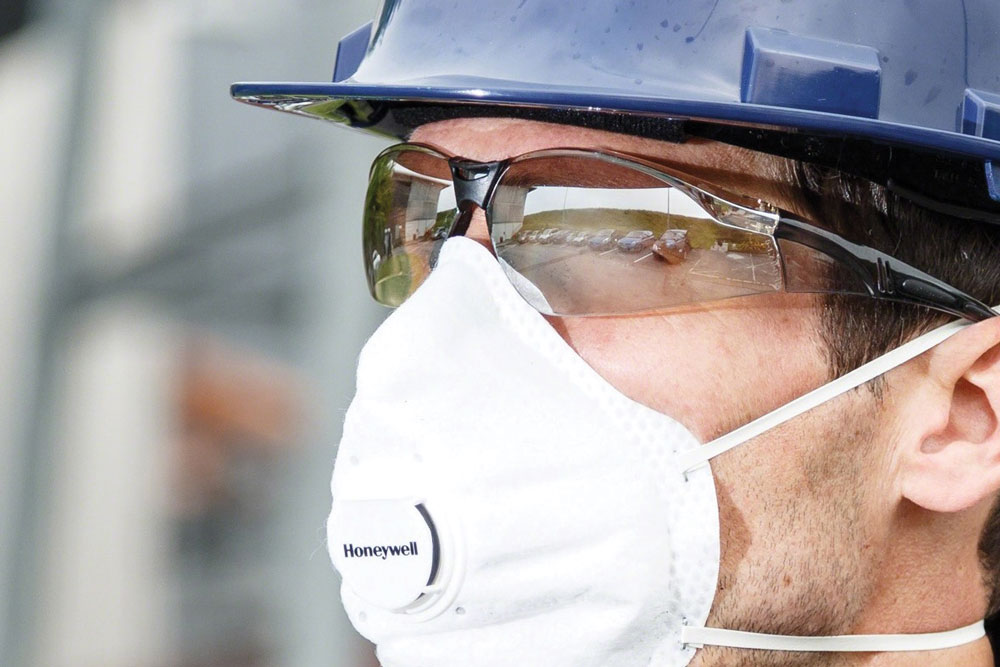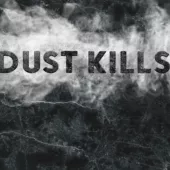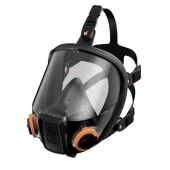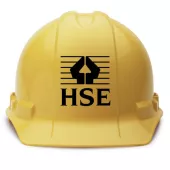Why Respiratory Protective Equipment Matters

First published in the June 2017 issue of Quarry Management as Why RPE Matters
Tackling work-related respiratory illnesses
By Luca Favarin, product manager EMEA, respiratory protection, Honeywell Industrial Safety
Occupational respiratory illness is a serious concern across industries, particularly in sectors such as quarrying, where workers can be exposed to fine dust containing crystalline silica, otherwise known as quartz1. And there are signs that some companies are still neglecting their duties to workers in this area.
According to the recent British Safety Industry Federation (BSIF) report ‘Tackling Work-Related Respiratory Illnesses’, every year 30,000 UK workers suffer from breathing or lung problems and 12,000 die from respiratory illness. Strikingly, as the report concludes, the right respiratory protective equipment (RPE) ‘correctly used and correctly fitted can prevent the vast majority of these deaths2.’
The problem is that occupational respiratory illnesses too often get little or no attention compared with more visible physical injuries. One reason for this is the long latency of the disease, meaning that workers may not show any clear symptoms until they have been exposed to harmful pollutants for years. As a result, many employers and employees continue to be unaware of the dangers presented by regularly breathing in particles such as silica dust, which can lead to silicosis, and such illnesses are often diagnosed too late for treatment to be effective.
An important reason why respiratory protection has been less than effective is that, traditionally, comfort has taken priority over safety. There is still a tendency among workers to either not wear RPE or not wear it correctly. For example, it is quite common to fit a mask too loosely if it is not comfortable enough. This is a problem that could easily be solved by providing workers with a more comprehensive choice of RPE, with a range of sizes and ergonomic fits, and appropriate training on how to use it. However, employers, especially small and medium-sized enterprises that may not have the same resources as larger companies, may see investing in new RPE and training programmes as a cost, failing to understand the long-term benefits that this can bring to the business.
Take fit testing for example. Some employers may see this crucial assessment of RPE performance, which is now compulsory in the UK, as being detrimental to business productivity. If performed correctly, the test, which has to be run on each individual worker, should take approximately 30 minutes and has to be repeated if it fails, which can result in downtime for the company. Additionally, the employer has to pay for the service offered by a competent trainer and a sensing device to assess the RPE’s performance.
However, there is now evidence that failing to invest at the very start can result in respiratory disease in the long run, which can turn out to be more costly for the business. For example, last year 25.9 million working days were lost due to work-related illness, which cost the UK’s economy £9.3 billion3. The Health and Safety Executive (HSE) estimates that a worker who is absent from work for more than seven days due to ill health will cost the employer £8,000 on average4.
With these figures in mind, a risk assessment should always be the first step of any safety strategy aimed at tackling respiratory illness. This should include knowing the type of pollutants that workers are exposed to and their concentration levels, both of which are essential to selecting the right RPE both in terms of level of protection and quality.
When it comes to selecting new RPE, legislation will play a key role in giving employers, safety managers – and ultimately workers – more assurance that the RPE they select meets the latest quality standards and is entirely fit for purpose. The new PPE Regulation (EU) 2016/425, set to come into application in April 2018, will introduce a five-year validity period on EU Type Examination Certificates, meaning more regular and strict assessments of the quality of PPE. When a manufacturer renews certification for their products, they will need to make sure these meet the latest industry standard – typically from the EN or ISO series.
However, a strong respiratory safety strategy should never stop at the pure compliance level and expect that once workers have been provided with the correct RPE it is up to them how to use it. The quality standards and performance levels that a piece of RPE will claim do not necessarily translate into total protection, with recent research showing that up to 50% of all RPE used does not offer the wearer the level of protection it declares because it simply does not fit their face5. For example, having a beard can prevent the RPE from completely sealing the user’s face, unless alternative forms of RPE that do not rely on a tight fit to the face are available6.
With this in mind, fit testing is key to ensuring that the equipment selected is suitable for the wearer. The test is performed by releasing a mixture of salt and water in the environment. If the RPE is not fitted correctly or does not fit the user’s facial morphology, the test will show, through the use of air sensors, the quantity of particles that the RPE is failing to keep out. Given its extreme importance, the test should always be conducted by experts, ideally the manufacturer or supplier of the RPE. In the UK, it is a legal requirement that the test is performed by a competent person and the BSIF has also developed a competency scheme for fit test providers – The Fit2Fit Accreditation Scheme – which is designed to confirm the competency of any person performing face piece fit testing7.
Whereas fit testing should always be performed at the RPE selection stage, it is also important to perform inspections on a regular basis. Checking the filter’s colour code, which is required by the EN 14387:2004+A1:2008 standard, is a quick and effective way of ensuring, at a glance, that the worker is wearing the right level of protection. Yet, it also vital to make sure that they continue fitting their RPE correctly over time, reinforcing their awareness through regular training. Broadly used RPE, such as masks, rely on a good seal against the face as any gaps around the edges could cause potentially harmful pollutants to pass through. It is, therefore, extremely important that workers wear their RPE correctly and check for a good fit every time and this is where technology comes in.
The growth in IoT (Internet of Things) means ‘connected’ RPE will allow safety managers to access vast streams of data that can be used to ensure workers receive the right training in the use of their protective equipment and that this is up to date, well-maintained and fit for purpose. More importantly, the latest technology allows businesses to develop an overall safety ecosystem to monitor, track and control exposures.
The intelligent, real-time data this approach offers can be used to not only help prevent occupational illnesses, but also to allow businesses to make informed decisions quickly and so reduce costs and downtime whilst increasing worker productivity. It also means workers can concentrate on the job at hand rather than worry about whether their equipment is working properly.
The ‘Tackling Work-Related Respiratory Illnesses’ report, along with recent campaigns such as the HSE’s ‘Helping Great Britain Work Well’8 are welcome and demonstrate that the safety industry’s awareness and knowledge of previously neglected long-term ill health is growing. As the BSFI’s report recommends, a strong health and safety culture that values the importance of investing in the latest RPE technology and training should be at the very centre of this approach and inform the safety strategy of UK employers moving forward. Manufacturers of RPE have a vital role to play in helping them understand the risks to health their workers are facing and how to tackle them.
References
- www.hse.gov.uk/quarries/silica.htm
- www.bsif.co.uk/wp-content/uploads/2016/11/BSIF-Tackling-Work-Related-Respiratory-Illnesses-2016-web.pdf
- www.hse.gov.uk/statistics/overall/hssh1516.pdf?pdf=hssh1516
- www.hse.gov.uk/economics/eauappraisal.htm
- fit2fit.org/
- www.hse.gov.uk/respiratory-protective-equipment/fit-testing-basics.htm
- fit2fit.org/
- www.hse.gov.uk/strategy/
- Subscribe to Quarry Management, the monthly journal for the mineral products industry, to read articles before they appear on Agg-Net.com








